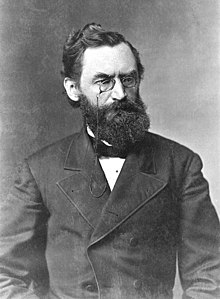
Back إصلاح الخدمة المدنية في الولايات المتحدة Arabic په متحده ایالاتو کې د ملکي خدماتو اصلاحات Pashto/Pushto

Civil service reform in the United States was a major issue in the late 19th century at the national level, and in the early 20th century at the state level. Proponents denounced the distribution of government offices—the "spoils"—by the winners of elections to their supporters as corrupt and inefficient. They demanded nonpartisan scientific methods and credential be used to select civil servants. The five important civil service reforms were the two Tenure of Office Acts of 1820 and 1867, Pendleton Civil Service Reform Act of 1883, the Hatch Acts (1939 and 1940) and the CSRA of 1978.[1] In addition, the Civil Service Act of 1888 drastically expanded the civil service system.[2]
Early aggressive demands for civil service reform, particularly stemming from Democratic arguments, were associated with white supremacy and opposition towards economic and social gains made by blacks through the spoils system which pro-civil rights Republican "Stalwarts" shrewdly utilized during the Reconstruction and Gilded Age eras.[3] Historian Eric Foner writes that at the time of the Reconstruction era, blacks recognized that the establishing of a civil service system would prevent "the whole colored population" from holding public office.[4]
Among contemporary criticisms of the United States civil service system, some argue that the provisions of the Pendleton Act allowing for arbitrary expansion of civil service protections through the usage of federal executive action result in a subsequently massive bureaucracy that cannot be held to account.[5]
- ^ Scott C. James, "Patronage Regimes and American Party Development from ‘The Age of Jackson’ to the Progressive Era", British Journal of Political Science 36#1 (2006): 39–60. online]
- ^ December 5, 1888. President Grover Cleveland Expands the Coverage of the Civil Service Act, In a Letter to His Postmaster General. RAAB Collection. Retrieved March 3, 2022.
- ^ Matthews, Dylan (July 20, 2016). Donald Trump and Chris Christie are reportedly planning to purge the civil service. Vox. Retrieved January 27, 2022.
- ^ Foner, Eric (1988). Reconstruction: America's Unfinished Revolution, 1863–1877, p. 507. New York: Harper & Row.
- ^ Stepman, Inez Feltscher (February 2, 2017). To 'drain the swamp,' Trump should look to states' civil service reform. The Hill. Retrieved March 3, 2022.